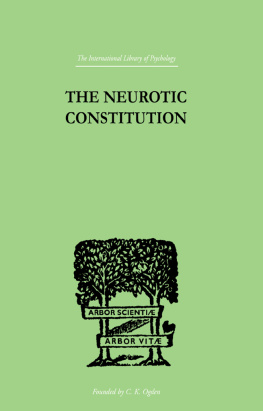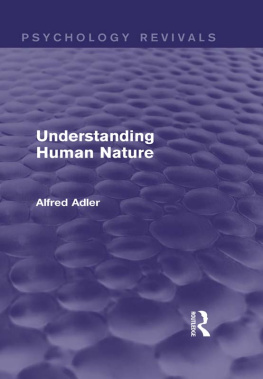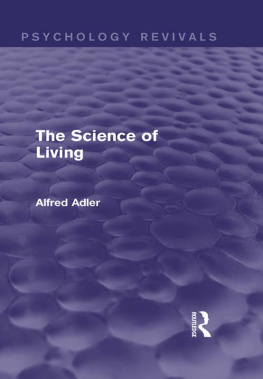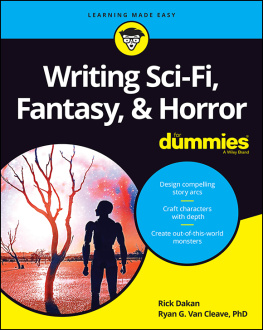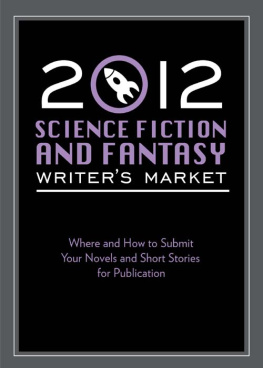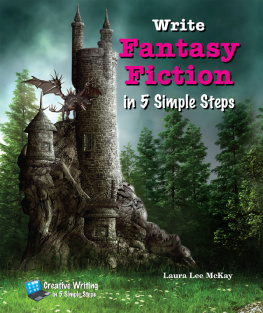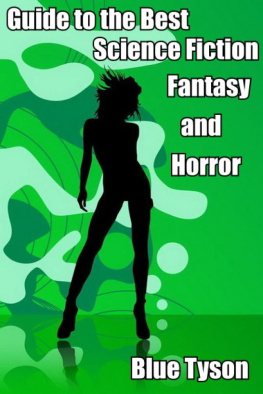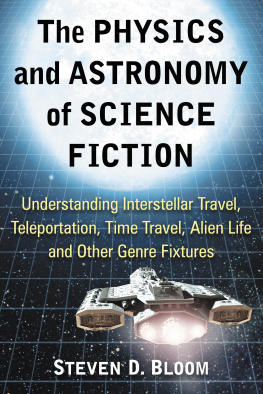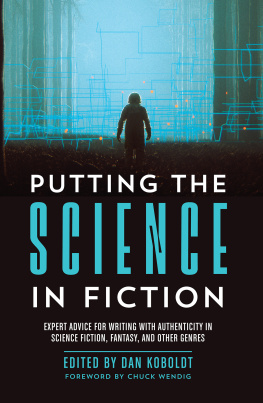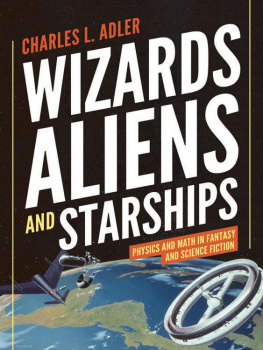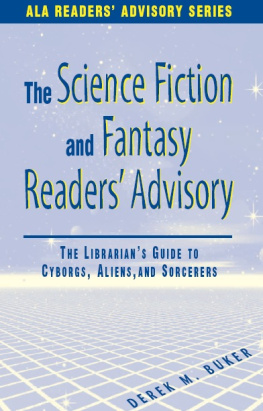
WIZARDS, ALIENS , AND STARSHIPS

Copyright 2014 by Princeton University Press
Published by Princeton University Press, 41 William Street,
Princeton, New Jersey 08540
In the United Kingdom: Princeton University Press, 6 Oxford Street,
Woodstock, Oxfordshire OX20 1TW
press.princeton.edu
Jacket Illustration: Chesley Bonestell, Space Station, Ferry Rocket, and Space Telescope 1,075 Miles above Central America (1952). Reproduced courtesy of Bonestell LLC.
All Rights Reserved
Library of Congress Cataloging-in-Publication Data
Adler, Charles L.
Wizards, aliens, and starships : physics and math in fantasy and science fiction / Charles L. Adler.
pages cm
Summary: From teleportation and space elevators to alien contact and interstellar travel, science fiction and fantasy writers have come up with some brilliant and innovative ideas. Yet how plausible are these ideasfor instance, could Mr. Weasleys flying car in Harry Potter really exist? Which concepts might actually happenand which ones wouldnt work at all? Wizards, Aliens, and Starships delves into the most extraordinary details in science fiction and fantasysuch as time warps, shape changing, rocket launches, and illumination by floating candleand shows readers the physics and math behind the phenomena. With simple mathematical models, and in most cases using no more than high school algebra, Charles Adler ranges across a plethora of remarkable imaginings, from the works of Ursula K. Le Guin to Star Trek and Avatar, to explore what might become reality. Adler explains why fantasy in the Harry Potter and Dresden Files novels cannot adhere strictly to scientific laws, and when magic might make scientific sense in the muggle world. He examines space travel and wonders why it isnt cheaper and more common today. Adler also discusses exoplanets and how the search for alien life has shifted from radio communications to space-based telescopes. He concludes by investigating the future survival of humanity and other intelligent races. Throughout, he cites an abundance of science fiction and fantasy authors, and includes concise descriptions of stories as well as a glossary of science terms. Wizards, Aliens, and Starships will speak to anyone wanting to know about the correctand incorrectscience of science fiction and fantasy Provided by publisher.
Includes bibliographical references and index.
ISBN 978-0-691-14715-4 (hardback : acid-free paper)
1. Fantasy literatureHistory and criticism. 2. Science fictionHistory and criticism. 3. Physics in literature. 4. Mathematics in literature. 5. PhysicsMiscellanea. 6. MathematicsMiscellanea. I. Title.
PN3433.8.A35 2014
809.38762dc23 2013027794
British Library Cataloging-in-Publication Data is available
This book has been composed in Minion Pro and League Gothic
Printed on acid-free paper.
Typeset by S R Nova Pvt Ltd, Bangalore, India
Printed in the United States of America
10 9 8 7 6 5 4 3 2 1
To Poul Anderson, who wrote it better, shorter, and earlier
CONTENTS
WIZARDS, ALIENS , AND STARSHIPS
CHAPTER ONE
PLAYING THE GAME
Dear Roger,
(XXX) and I have been exchanging letters for some time. As a fan, hes strange; he likes the science better than the fiction. Wants me to quit futzing with the plot and characters and get on with the strange environments. He plays The Game: finds the holes in the science and writes in. I like him.
LETTER FROM LARRY NIVEN TO ROGER ZELAZNY, JANUARY 3, 1974
1.1 THE PURPOSE OF THE BOOK
When I was young, back in the 1970s and 80s, I read a lot of science fiction. I read a lot of other stuff, as well, but science fiction (and fantasy) filled a need that other literature simply didnt. I tended to read hard science fiction, that is, stories plotted around hard science: physics, astrophysics, giant engineering projects, and the like. The worlds these stories portrayed, where space travel was common, human problems such as poverty were nearly eliminated, and conflicts centered on larger-than-life issues, always seemed to me more compelling than human dramas that revolved around why someone didnt love someone else.
My tastes have changed since then, but the initial thrill of these stories has never really left me. I am a scientist because of my initial love of these tales. A chill still runs down my spine whenever I look at a Hubble Telescope photo or learn of a new exoplanet discovered. I live in hope that I will be alive when life on other planets is discovered. I still want to take a vacation to the Moon or to an orbiting satellite. These thrills are tempered by my adult realization that much of what goes into science fiction is quite unrealistic. This book is written for my fifteen-year-old self, and other readers like him, who would like to know which parts of science fiction are based on real science, and therefore in some way plausible, and which parts are unrealistic. This is the book I would have wanted to read when I was young. Just as for Nivens correspondent, my interest in science fiction was mostly in the strange environments, the new worlds, the alien life, the superscience it portrayed. I wanted to know which parts were (potentially) real and which werent. To a large extent, that is why I eventually became a physicist.
Almost any science fiction story has a lot of incorrect science. This doesnt make the story bad or invalid. Some authors, like Larry Niven, are almost obsessive in trying to get the science right; most are more lackadaisical about it. However, the standards for the profession are pretty high: no science fiction writer can be really esteemed accomplished unless he or she has a thorough knowledge of basic physics, chemistry, biology, astrophysics, history (ancient and modern), sociology, and military tactics; and besides all this, must possess a certain something in their air and manner of writing, or their profession will be but half-deserved. (Improvement of their minds by extensive reading goes without saying.) Science fiction writers do not have the same opportunities as research scientists do to stay up-to-date in their research fields, and writing science fiction involves a lot more fields than most research scientists can keep up with.
This book is one physicists attempt to discuss the science, particularly the physics and mathematics, that goes into writing hard science fiction. As an added bonus, I also take a look at physics in fantasy writing: theres more in it than meets the eye. This is not an attempt to predict the future: as G. K. Chesterton pointed out, most of the fun in predicting the . Rather, I stick to the science used in crafting the stories. There are many books dedicated to the literary criticism of science fiction; this book is devoted to its scientific critique. As such, my choice of which literature to use is dictated both by my own reading and by the needs of the book. I tend to avoid writers who dont make much use of science in their stories, except occasionally to comment on their errors. I also tend to stick to literature, that is, novels and short stories, although I occasionally comment on science fiction movies or television shows as well.
Many have gone down this path before me, scientists and writers alike (and a few who were both). The preeminent standout among science fiction writers is Poul Anderson, to whom this book is dedicated, for his essays How to Build a Planet and On Thud and Blunder. I read both when I was a teen; this book would not have been written but for his example. Isaac Asimov and Arthur C. Clarke both wrote many essays on science. Larry Niven has written several essays on the scientific aspects of teleportation, time travel, and other science fiction themes. Almost from the beginning of the modern era, scientists have written essays on science fictiony ideas, and I reference them where appropriate. This book is mainly synthetic rather than original, although I think there are a few new things in it, such as the discussion of candlelight in the Harry Potter series in .
Next page

